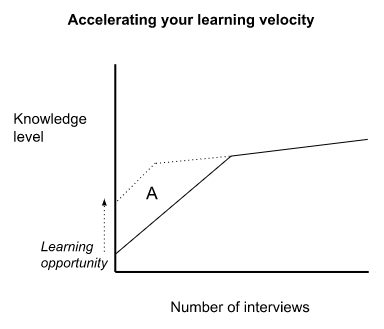Written by Silvan Kersbergen – Innovation Expert
I saw a great video with Steve Jobs from 1997 the other day.
In the video, Jobs speaks at Apple’s Worldwide Developers Conference and explains the idea many companies base their business strategy on:
“Let’s sit down with the product engineers and figure out what awesome technology we have and how we are going to market that.”
Clearly, he’s not a fan of that.
Jobs also explains Apple’s vision on business strategy:
“You’ve got to start with the customer experience and work backwards towards the technology.”
Jobs is convinced that you shouldn’t start with what you can create but with what your customer needs.
In other words, push versus pull.
I think both can work.
You can find something new (technology, a product or service) and try to find people for whom that could be valuable. But you always need to identify the customer problem(s) which your technology, product or service is solving. I’m currently working on such a project for Cosun Beet Company and through our customer exploration we’re finding that their new invention could solve some very critical customer problems.
The other route is that you might see a need among your (existing or prospective) customers, and try to find a solution (technology, a product or service) for them. We currently run a project for Philips, and we’re learning a lot about the needs and desires of this new customer segment before developing a proposition. Again, I think both can work. Neither work if you only understand your world and are not capable of understanding your customers’ world. Both can work if you have the capacity to understand your customers and translate that data into ideas for new products or services.
In corporate innovation speak, this is called ‘customer exploration’. Since joining Aimforthemoon at the start of this year, I learned that customer exploration is:
- Not trivial
- Not a core capability in every company
- Because not every company sees it as an important capability to have
Customer exploration is a crucial element in how we at Aimforthemoon work, and it’s part of the reason why our ventures become successful. We focus so much attention on it because simply put, the time of a few players dominating the market is over, competition is everywhere, and you need to know exactly what your customers need and offer incredible benefits that help them perform their job(s) to be done.
At the core of customer exploration is defining hypotheses and asking the right interview questions. The more and the better interviews you do, the better the insights will be and the faster you’ll be able to define a proposition that your customers buy. There are several books and tools that can help you do proper customer validation, like The Mom Test and the Assumption Matrix.
But what I learned through my project at Cosun Beet Company, is that it’s equally important to ask the right questions to your colleagues up front. Whenever you’re going to do customer interviews for a product, service or proposition you didn’t develop yourself, it’s extremely important to get the right information from your colleagues before you start your first interview. During this project, I went back and forth several times because I didn’t have the required information.
Here, I learned the importance of a proper interview briefing. Without one, you know very little about the product, which means you will be wasting time and face the risk of harming the company’s reputation. You simply don’t want to talk to (prospective) customers and get lots of questions that you can’t answer (which could have been answered by someone else). It’s your job as a venture builder to ensure you have a solid briefing.

This is where I spotted an opportunity to accelerate my learning velocity (‘A’ in the table above) in future projects, which might help other venture builders too. You can get up to speed with the current state of the product’s development by including the following questions in your briefing:
- What are the assumptions about the target customer that we want to test?
Next step: fill in Assumption Matrix
Including: Which assumptions are critical to the success of this project? Put differently, if they’re invalidated, the project can stop instantly.
- What do we already know about the target customer that is true?
Next step: fill in Scanvas - How can the new invention potentially solve the identified customer problems?
Next step: fill in Value Proposition Canvas - Which factors influence the target customer’s reasoning about the price point?
In other words: what determines ‘the right price’ for her, and why? - What is the maximum amount of information about the technology, product or service that we can share with the interviewee without sharing sensitive information?
- How does this technology, product or service relate to alternative solutions? What are the unique benefits?
- What (technical) jargon is often used?
In my case, with Cosun Beet Company, I needed to learn more about words like “microproteins” and “texturizer”. - Who do we have in our direct network that we can approach for an interview?
These questions help me perform better interviews at the start of a venture, and I hope they might benefit you too.
Silvan Kersbergen is an innovator at Aimforthemoon. Silvan and everyone here is dedicated to innovation for any organization. Contact us for your next step with us!
